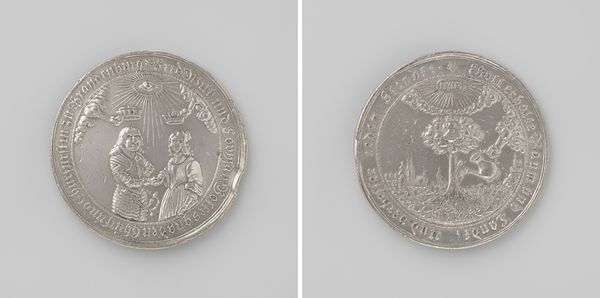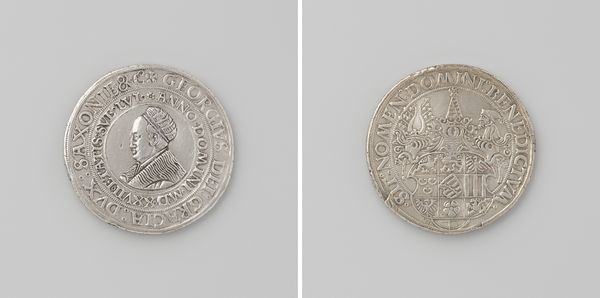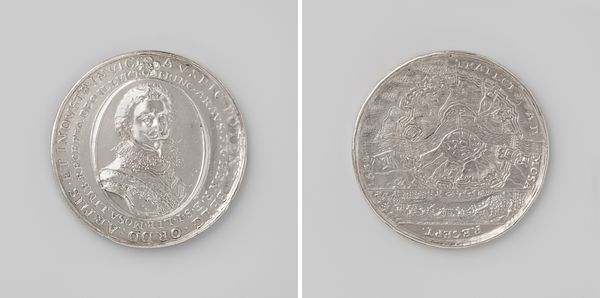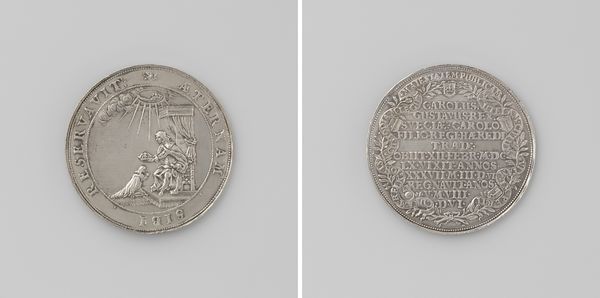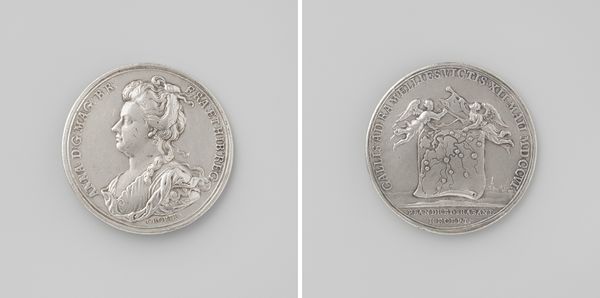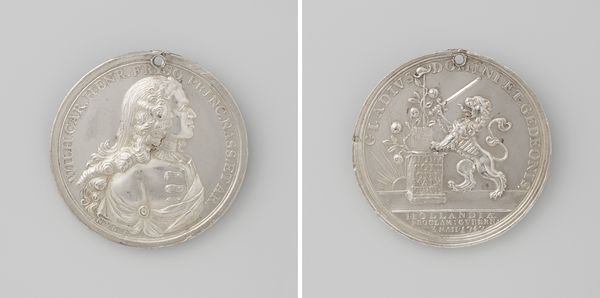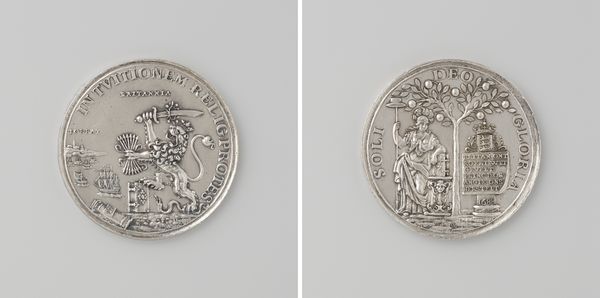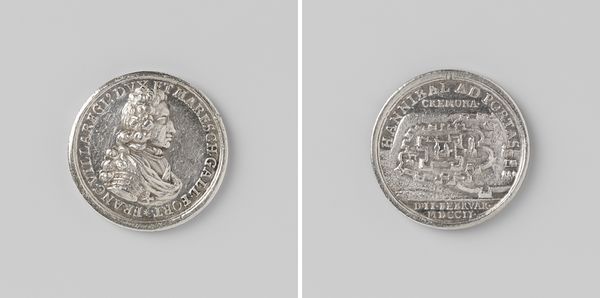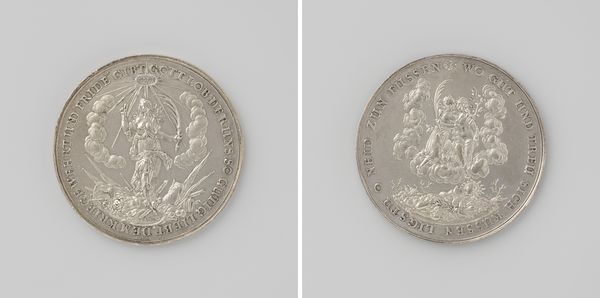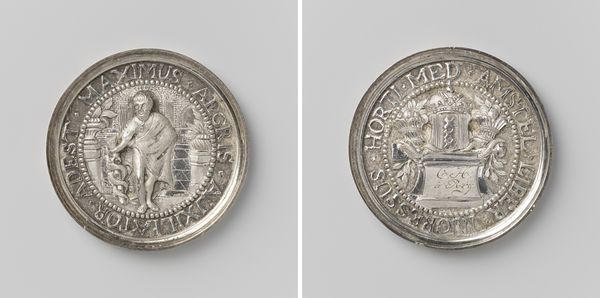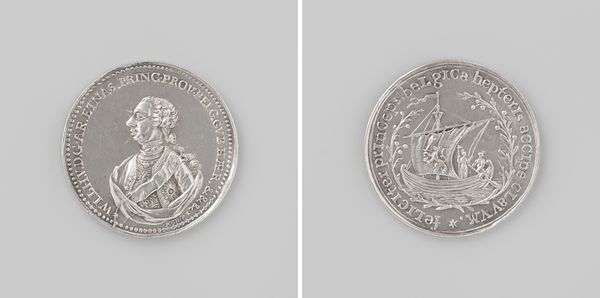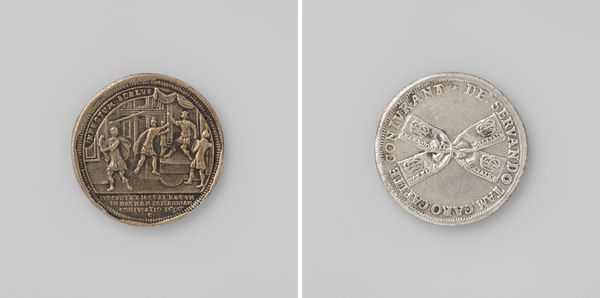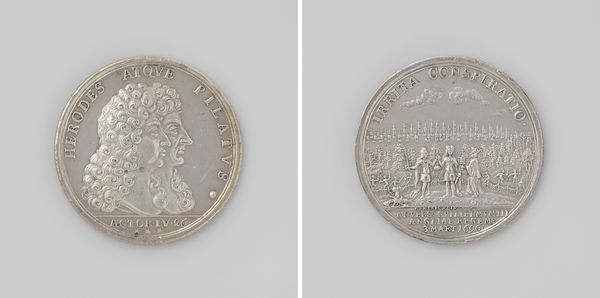
Duitse overwinningen in de Frans-Pruisische oorlog, ter ere van Wilhelm I, koning van Pruisen 1870
0:00
0:00
Dimensions: diameter 6 cm, diameter 5.3 cm, weight 48.58 gr
Copyright: Rijks Museum: Open Domain
Curator: Here we have an artwork called "Duitse overwinningen in de Frans-Pruisische oorlog, ter ere van Wilhelm I, koning van Pruisen." It was made in 1870 and it's currently held here at the Rijksmuseum. Editor: Wow, even though it’s metal, there's something… soft about it? Like a dream of victory more than the harsh reality. It's like a beautifully decorated coin but enormous. Curator: That softness is partly because it is a relief, meaning the images are raised from the background but not fully three-dimensional. The imagery certainly plays into the prevailing classicism and neoclassicism, visible in its formal composition and allegorical figure, Germania, likely meant to evoke feelings of national pride and the idea of a strong, unified Germany, riding off of victory. Editor: Germania does look pretty badass, brandishing her scepter like a boss! Yet, looking closer, there's also something melancholic, even vulnerable about the whole piece. Like they are almost overcompensating with these old-fashioned power symbols? Curator: Indeed, victory can be performative, particularly in the context of socio-political changes. Pieces like these, circulated among the population, are incredibly efficient tools in building a consensus on new leadership, new ideologies. The very act of commemorating an event solidifies its importance in a society's collective memory. Editor: I guess that's true, because thinking about the losing side and the aftermath... well, there's a very thin line between triumph and trauma. And maybe this medal is right on that tightrope, reflecting how quickly public feelings could change. Curator: I agree. What seems like straightforward celebration is loaded with nuances when seen from the vantage of historical awareness and public use. Editor: So, from trophy to historical memento mori in about 2 minutes? Curator: Possibly, yes. The dialogue it creates centuries later is as important as its original intended function.
Comments
No comments
Be the first to comment and join the conversation on the ultimate creative platform.
